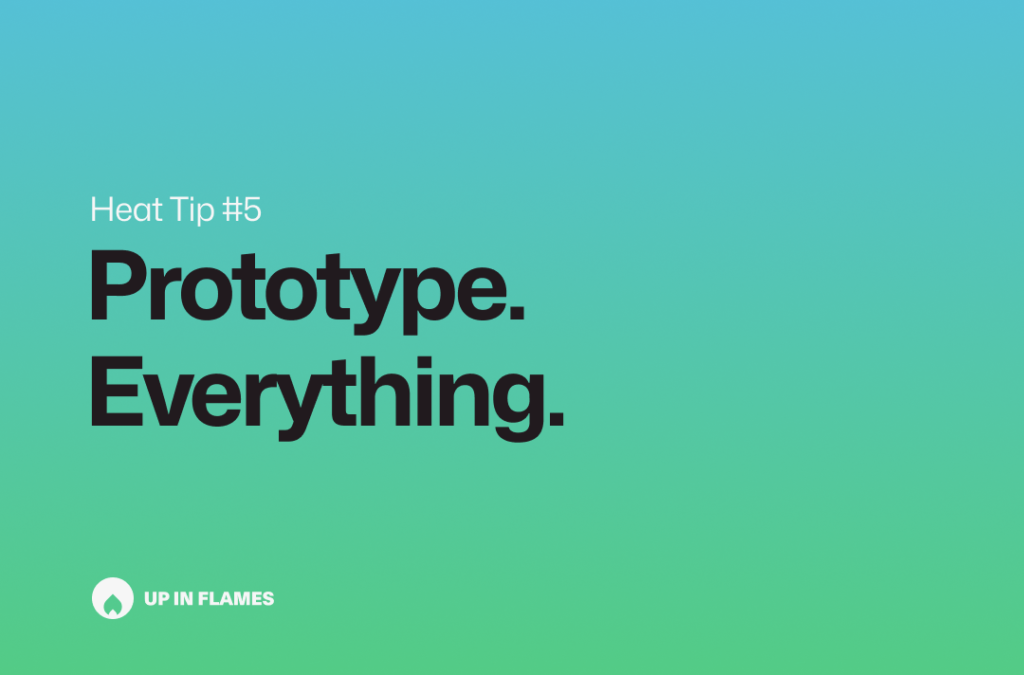Adopting a “Prototype. Everything.” approach isn’t just good advice—it’s a game-changer when managing complex projects. Consider this: you’ve only reviewed static screens during a project until late in development. This oversight led to a design flaw—our header with a search bar was inconsistently toggling between states across different screens, creating a jarring user experience. This problem, which caused the header to appear as if it was jumping back and forth between states, could have been spotted and resolved much earlier with effective prototyping. Let’s explore why prototyping is vital for every aspect of your project.

Why Prototype?
Prototyping is about more than just checking if something works technically. It’s about testing every part of your project—from workflows and tech setups to dependencies and the sequence of operations. Here’s how prototyping can aid your project:
- Risk Reduction: Each prototype tests a part of your project, revealing any issues early so you can tweak things before the costs pile up.
- Assumption Validation: Prototypes test your plans, ensuring that your project steps are based on solid facts and realistic plans. Your prototype can come in handy with end-user research but also showcases well-thought-out plans when making improvements and adding features. If your prototype links break, your updates break a part of your flow.
- Stakeholder Engagement: Getting prototypes in front of stakeholders early keeps them in the loop and improves the feedback you get. You’ll reduce the risks of getting feedback later with the note, “I didn’t realize it was going to work like this!”
Beyond Technical Prototyping
Sure, checking the tech is vital, but don’t start there:
- Design Prototyping: Leverage Figma’s prototyping capabilities. See which screens and buttons point where. Design prototyping is essential because it shows you, for example, that you still need to put in a link to the Terms & Conditions or that you still need to get the T&Cs.
- Process Prototyping: Try your project workflows early by drawing them out to spot any hitches or slowdowns before fully implementing them into your team or organization. Drawing out your process forces you to think about it in more detail, just like drawing out a schedule forces you to think about dependencies.
- Dependency Checks: Use prototypes to see how different parts of your project interact and depend on each other.
- Production Order: Play around with when things are done to find the most efficient way to tackle the project.
Practical Tips for Effective Prototyping
- Start Early: Bring prototyping into your project planning right from the start. The first thing you want to see in a UX design is a flowchart and then iterate on that in the UI design of the product.
- Iterate Often: Keep trying new ideas and refining them through frequent, smaller prototypes. Why would this make for a good addition? What does it do to the rest of your product or workflow?
- Include Everyone: Get the whole team involved in prototyping. It gives you a complete picture and more diverse input. Are you doing a UX prototype? Show it to your stakeholders. Ask them for feedback; is this how everyone imagines this product will work? Show it to your development team. Are there any technical aspects that we should keep in mind? Are there underrepresented integrations in the flow? Are you designing a process? Show it to people to get some feedback.
- Document Findings: Keep notes on what each prototype teaches you—what worked, what didn’t, and what you decided.
Conclusion
Prototyping is more than a step in product development; it’s a key strategy you should weave into your project approach. Making prototyping a regular part of your process will better prepare you to handle anything your project throws at you.
Think back to a recent complex project. Could a prototype have helped smooth things over or saved some resources? How can you weave more prototyping into future projects to reduce surprises and streamline success? Is your Figma design file a prototype? Why not?

